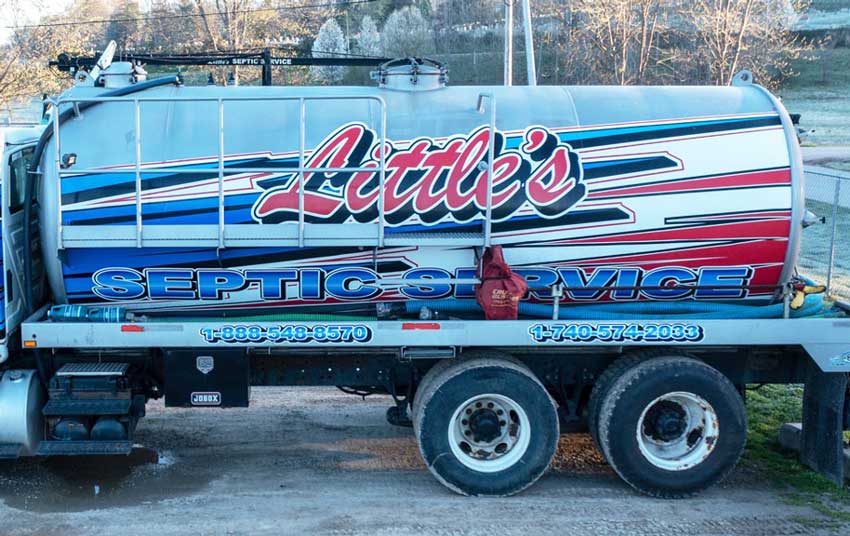Not known Facts About Stillwell Septic And Grading
Not known Facts About Stillwell Septic And Grading
Blog Article
Things about Stillwell Septic And Grading
Table of Contents7 Easy Facts About Stillwell Septic And Grading Described7 Simple Techniques For Stillwell Septic And GradingStillwell Septic And Grading Can Be Fun For Anyone3 Easy Facts About Stillwell Septic And Grading ExplainedA Biased View of Stillwell Septic And GradingOur Stillwell Septic And Grading Ideas
A leaking bathroom can squander hundreds of gallons of water a day. Take baths with a partially-filled tub and do not leave the tap running when doing other jobs. Wash only full loads of recipes and laundry.
An Unbiased View of Stillwell Septic And Grading
Stay clear of burning piles of leaves or branches over the drainfield, as the warmth could harm the plastic pipelines below. Limit the addition of topsoil or garden compost to no greater than a couple of inches over the drainfield. Septic Installers. An excellent general rule for landscaping over drainfields is to use shallow-rooted plants that do not require extra topsoil to grow
Yard is the very best cover. Prevent trees, bushes, and water-loving plants with deep roots. Turfs, blended wildflowers, and ground covers with superficial roots are excellent alternatives. Plant trees and bushes at the very least 30 feet away from your septic system and drainfield to maintain roots from obtaining into and damaging or obstructing the drainfield pipes.
A septic system failure triggers untreated sewer to be released and carried to where it needs to not be. This might cause sewer to come to the surface area of the ground around the storage tank or the drainfield or to back up in pipelines in the building.
The Best Strategy To Use For Stillwell Septic And Grading
The person that falls in obtains out without serious injury. However a kid's unfortunate fatality is a reminder to check your septic tank for damaged or missing covers. Owners of septic systems are in charge of guaranteeing the systems are safe and feature appropriately, consisting of having a safe and secure lid on the tanks
Use screws, screws, or other locks to protect the covers and protect against easy access. Never ever drive or park lorries on top of septic systems- it can damage or dislodge the cover.
Stillwell Septic And Grading for Dummies
Ensure the covers are protected after working with your septic system. Teach youngsters that the septic container lids are not to be used or opened up. Have septic systems that are no more in use effectively deactivated. For other general secure methods around septic systems please testimonial the Septics 201 DIY Program Septic Safety Tips.
Keeping in mind the degrees will assist figure out if there is a prospective issue with the system. After that, the tank will be completely pumped down, eliminating every one of the fluid and strong waste. When the tank is completely pumped, the inlet and electrical outlet tees of the will be evaluated to guarantee they are still intact and working correctly
Stillwell Septic And Grading Things To Know Before You Get This
If you are home at the time of service (entirely not called for if that's not your point) you might be asked to flush your commodes to make sure every little thing is flowing appropriately. As soon as the solution is complete, the septic system will certainly be covered as it was when we showed up! Specialists suggest having your system pumped every 3 to 5 years but a number of aspects should be considered when choosing how frequently your septic system requires to be serviced.
If your septic has not been serviced in even more than 6 months, we would desire to service the septic. If the issue continues, a drain cleaner will certainly after that be sent out to remove the line to the septic tank.
Indicators on Stillwell Septic And Grading You Should Know

If the ponding is focused over the leach area that can suggest a leach line is blocked with Bio-Mat and needs to be fixed or replaced. The majority of septic systems have two to 3 covers; one over the inlet side of the sewage-disposal tank (where the water from your home enters the storage tank), one in the center of the storage tank, and one on the outlet side of the container (where the liquid from the storage tank leaves to your leach area).
Sliced up food particles do not damage down in the septic storage tank and can make their escape into your leach area lines causing clogs. Waste disposal unit, even those marked septic safe, are not taken into consideration advantageous for your septic tank. Proper working degree is where other the water level in your container fulfills the electrical outlet tee of the tank.
Report this page